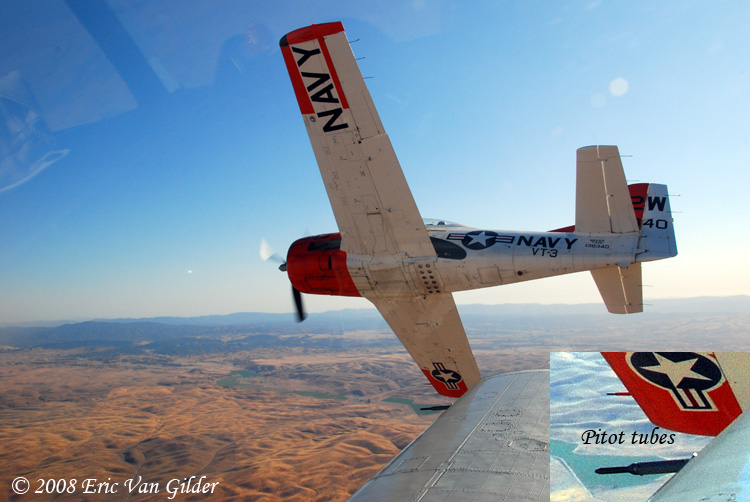Many times, the pitot tube, also known as the pitot probe, is mistaken for a machine gun.

A North American AT-6 Texan over the Pacific, near Ventura, California
A french industrial engineer named Henri Pitot was responsible for inventing the pitot tube to measure the velocity of air and gas. Mr. Pitot's invention goes back to the early 1700s. French scientist Henry Darcy made some changes to the original design in the mid 1800s to it, and the design is pretty much the same today.
The pitot tube uses the Bernoulli's law, which states basically that total pressure is static pressure plus kinetic pressure. To try and keep too much math or science out of this (I started to see eyes glassing over), the basic principle is that it compares the pressure of the incoming air (kinetic) with the pressure of the air that is not moving (static). Using mechnical or electrical inputs to the measurements provides your air-speed reading.
The needle-like pitot tube is often mistaken for a machine gun, and because of the shape of many pitot tubes, it is easy for that assumption to be made.

Pitot tubes as seen on the North American T-28 Trojan
Below are some photos of pitot tubes and machine guns for reference. Keep in mind that most trainer aircraft do not have machine guns installed on them. Any American aircraft whose designation starts with a T is a trainer, such at the T-28, or T-34. Additionally, earlier trainers also add an A or a P to that, such at the PT-17 or the AT-6. The PT means primary trainer, which is what new students would fly before moving on to advanced trainers (AT).

Pitot tube, cannon and machine gun placement in the Mitsubishi A6M3 Zero

Pitot tube and machine guns on the Curtiss P-40 Warhawk
While some machine guns have their barrels sticking out of the wing of the airplane, some are completely inside the wing, with holes cut in the wing for the bullet to pass through. They may also be in the cowl for the engine or elsewhere on the airplane.
What is important to remember is that any civilian owned former military aircraft will have non-functional weapon systems per FAA and ATF regulations. So while you may see machine guns on a museum aircraft, they are non-firing, and will not have live ammunition on board, for obvious reasons.

No comments:
Post a Comment